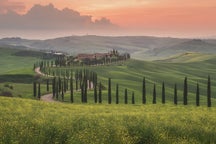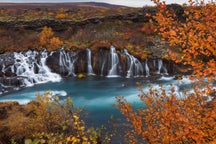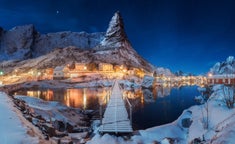Þingvellir has always been popular, for obvious reasons. The history and striking landscape make the place an almost mandatory stopping point for tourists. In the middle of the 19th century, an idea was put forward in the US to conserve areas that are unique because of their beauty and grandeur. Settlers and others who travelled to uninhabited areas discovered places and natural phenomena at the sight of which they were spellbound. These were new ideas, a vision in which beauty and special characteristics started to be evaluated as wealth that mustn't be sacrificed, but instead, must be cared for and preserved for future generations. These ideas came to Iceland in the early 20th century.
In 1907, State Antiquarian Matthías Þórðarson wrote a magazine article entitled "Protection of Beautiful Places and Remarkable Natural Phenomena". There he discussed the necessity of preserving places that were remarkable and special because of their beauty; no less important, he maintained, than protecting ancient relics and old church objects. He suggested various places, but specified the Almannagjá fault and the area around Þingvellir by the river Öxará as an example of a site that deserved better care. He actually pointed out that Almannagjá had already been ravaged by the road work that by then was a fact. He cited examples of protection plans abroad and mentioned Yellowstone Park in the US as a place protected by law.
In 1913, teacher Guðmundur Davíðsson wrote an article that turned out to trigger the discussion of establishing a national park at Þingvellir. The article was published in a periodical called Eimreiðin, edited by University teacher Valtýr Guðmundsson. The article was explicit indeed and Guðmundur did not beat around the bush in depicting his countrymen's bad treatment and negligence of this most historic place in the country, Þingvellir. At beginning of the article he wrote: "Few Icelanders visit Þingvellir for the first time, without admiring the beauty of the landscape and being reminded of some of the major events that are interwoven into the history of this important place. These two factors, the historical events and the natural beauty, must stir the feelings of anyone standing in this sacred and legendary place. It brings together some of the most striking and beautiful aspects of Icelandic nature, while also being the site of many of the most important events of Icelandic history."
In the article, Guðmundur cited examples of national parks in the US and explained the necessity of protecting Þingvellir that, by then, had become a popular weekend destination for travellers. However, it wasn't until 1930 that the first national park in Iceland was established - Þingvellir National Park. In 1930, Guðmundur Davíðsson was appointed as the first National Park Warden at Þingvellir, living there until 1940, when he had to retire because of poor health. He then moved to Reykjavík and was an Alþing employee until 1948.
Today, Þingvellir is one of the most frequently visited tourist sites in the country. Each year, thousands of visitors go there to become better acquainted with Iceland's greatest historical site and jewel of nature.








